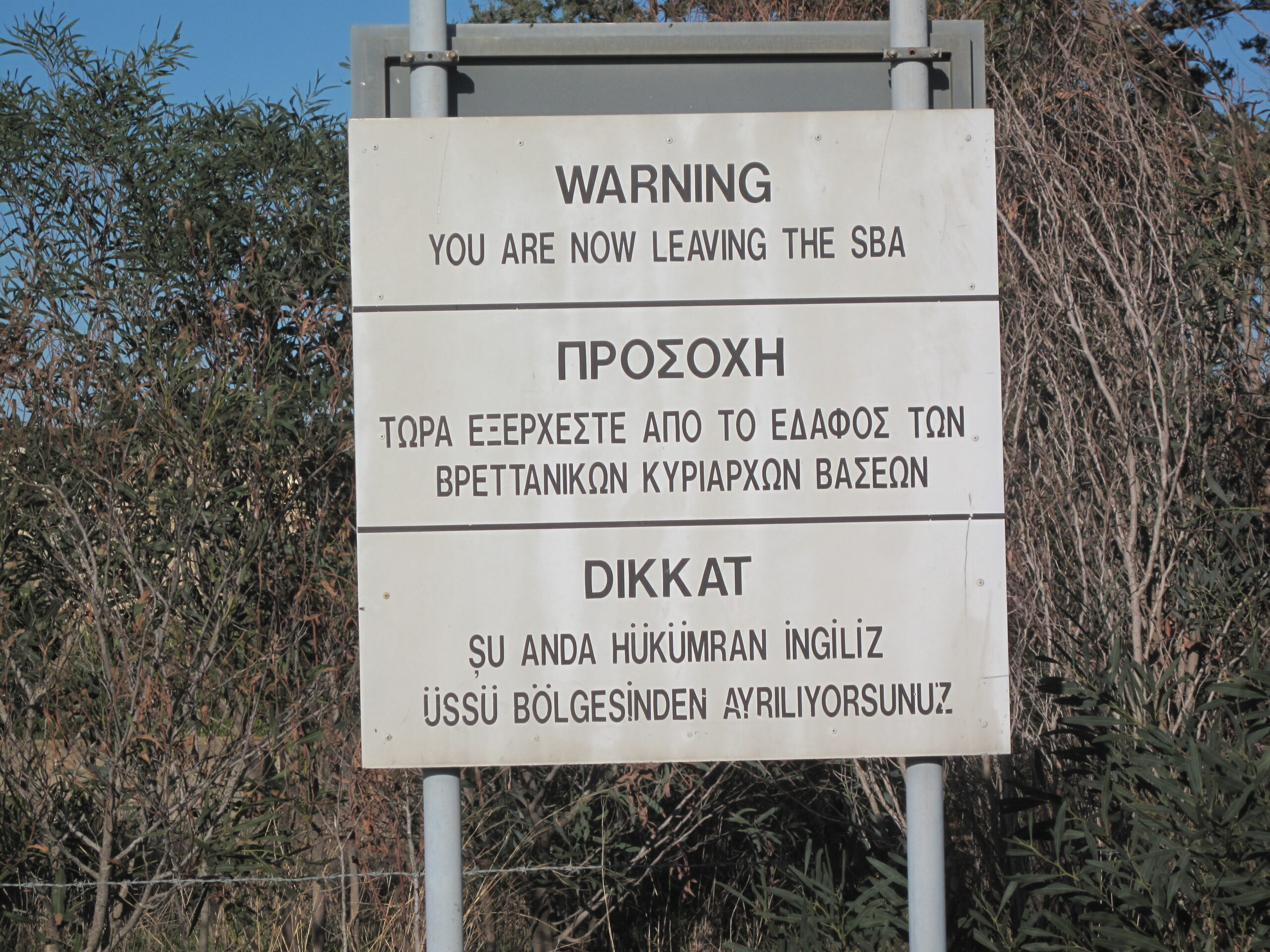On European Day of Languages, Christiana Themistocleous reflects on how, in conflict-ridden societies language can reinforce the ideas of ‘utopia’, as a space of peace that connects the two communities, or ‘dystopia’, a space that still reflects the brutality and atrocities of the war.
Known for its crystal clear waters, beautiful beaches, warm weather and rich culture, Cyprus is a dream destination. But the tiny country has been divided for 50 years after a deadly war in 1974 between Greek-Cypriots and Turkish-Cypriots. The destruction of the war was immense; people were displaced, hundreds died and many are still missing.
Since then, the island has been divided by a UN-controlled buffer zone –the Green line. Greek-Cypriots live in the south and Turkish-Cypriots live in the north part of the island. Political leaders from the two communities have been engaging in dialogue towards a peace deal since the division, but an agreement has never been reached. To this day Nicosia, the capital, remains the only divided capital in the world.
A historic step in 2003 saw movement restrictions being lifted after 30 years of complete separation. Today, there are seven designated crossing-points across the Green Line, connecting the two communities. One of them –the Ledra/Lokmaci crossing-point – is located in the commercial heart of Nicosia and it is the focus of my research.
Conducting ethnographic research in such turbulent contexts is not easy. War and post-war zones are inevitably high-risk sites and issues around access and security can not only endanger the researcher and their participants but also restrict the quality and quantity of the data gathered. Despite challenges, we can draw on a large reservoir of approaches, methodologies and tools in sociolinguistics to explore such turbulent contexts.
In my work I explore language use in public spaces – an area of research known as Linguistic Landscapes. We are surrounded by signs. Simply stopping for a moment and having a look around you, you can see all sorts of signs displayed on walls, shop windows, and other locales containing languages, images, colours and various typographic choices. All these ‘resources’ can tell us something about the sociolinguistic composition and language boundaries of a given region. At the same time they can unveil symbolic functions. Language choice on public signs is never random; their presence or exclusion on public signs can restrict the target audience and as a result denote which languages are supported or marginalised. This, in turn, can provide valuable insights into the prominence, status and prestige of languages, and their speakers, and into ideological conflicts, especially in areas which are politically and socially contested.

Early in my research I walked the entire length of the Greek-Cypriot commercial street, passing through the passport control at the Ledras/Lokmaci crossing-point, and then entering the Turkish-Cypriot commercial area. I collected photographic data by documenting each public sign visible and legible to passers-by. The analysis revealed that the language of ‘the other’ is mostly excluded from each community’s public space. This of course indexes the territorial limits and language boundaries of the two communities. But the restriction of the target audience also promotes distinct cultural and national identities, reflecting at the same time historical and political ideologies of division and alienation.
Interestingly, the public space of the Ledras/Lokmacı crossing-point was different, as multilingual signs that contained the language of the other were displayed on the abandoned buildings of the buffer zone. These seem to challenge nationalist ideologies, establishing connections among the two communities.

I also wanted to explore how ordinary people who live and work in the area experience the public space of this turbulent context. A collaboration with a Turkish-Cypriot scholar, a rare occurrence in Cyprus due to the conflict, enabled us to conduct one of the first bi-communal sociolinguistic studies in Cyprus. Dr Cise Cavusoglu (Near East University) and I conducted walking-tour interviews with Greek-Cypriot and Turkish-Cypriot citizens, walking with them along the divided commercial areas and the Ledras/Lokmaci crossing-point. As we walked together, we asked them to observe the signs and languages around them and discuss their opinions thoughts, feelings and memories.
We discovered that stances differed, not so much based on generational differences or the community they were coming from, but more on the political and linguistic ideologies they held. Some saw the public space of the crossing-point as ‘utopia’, namely a space of peace that connects the two communities. Yet, others saw it as ‘dystopia’, a space that still reflects the brutality and atrocities of the war.
Christiana Themistocleous is Associate Professor of Sociolinguistics in the Department of English Language and Applied Linguistics. Her research focuses on multilingualism in borderline communities affected by conflict, particularly the identities and ideologies that relate to conflict, migration, displacement, tolerance and social cohesion.

